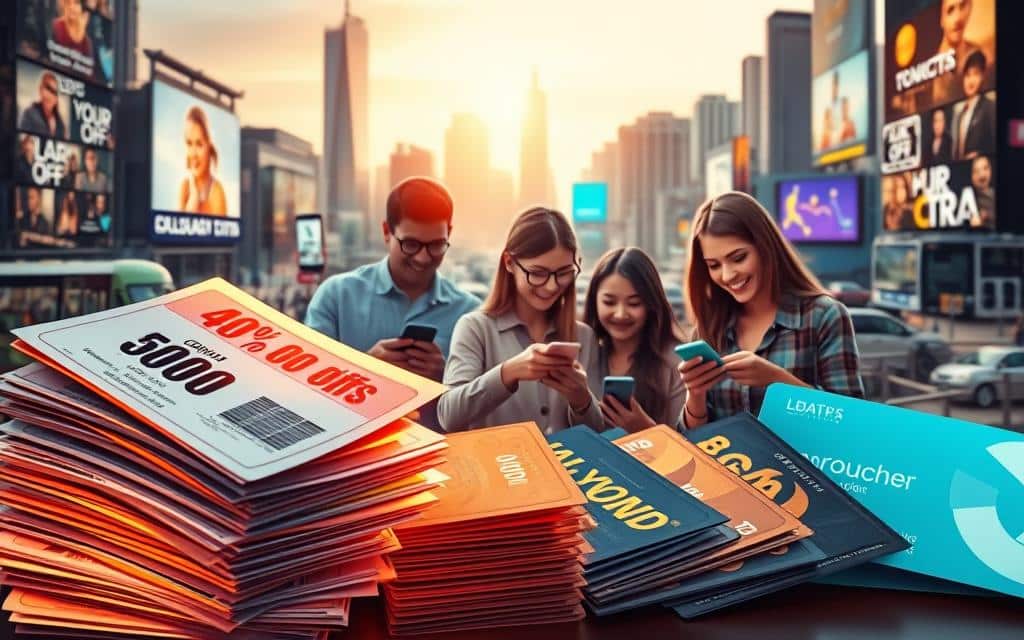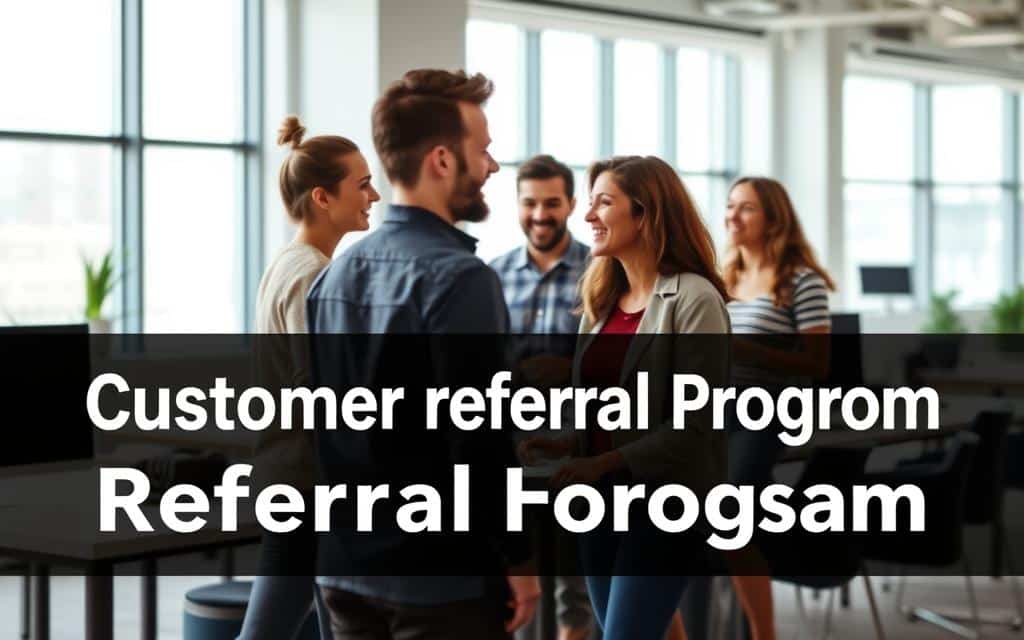Imagine standing in a crowded marketplace where every brand shouts for attention. How do you make yours stand out? The answer often lies in strategic rewards that spark curiosity and drive action. Whether it’s a limited-time discount or early access to new features, these tools create urgency and connection.
Rewards aren’t just about short-term sales. They shape how customers perceive your brand. A well-timed free trial or loyalty program can turn casual buyers into repeat advocates. For businesses, this means higher revenue and deeper relationships in competitive markets.
But not all incentives work the same. The best ones align with your audience’s values—think personalized offers or exclusive perks. This guide breaks down how to design campaigns that deliver results, from boosting engagement to fostering long-term trust.
Key Takeaways
- Incentives act as powerful tools to cut through advertising noise and motivate customer decisions.
- Discounts, free gifts, and early access are proven methods to drive immediate action.
- Effective rewards strengthen brand loyalty by creating emotional connections.
- Strategic programs balance short-term gains with long-term relationship-building.
- Businesses in crowded markets see higher revenue growth when incentives stand out.
- Tailored offers perform better than generic promotions by aligning with audience needs.
- This guide provides actionable steps to design and implement incentive-driven campaigns.
Introduction to Incentive Marketing
In today’s digital noise, brands need more than flashy ads to win attention. Incentive marketing cuts through the clutter by offering real value that aligns with what your audience truly wants. Think of it as a bridge between promotions and genuine relationships—where discounts and rewards become tools for meaningful connections.
The Basics of Rewards-Driven Campaigns
Simple perks like free shipping or bonus points often drive faster decisions than complex offers. For example, a “buy one, get one” deal creates instant appeal, while loyalty programs keep customers returning. These strategies work because they reduce risk and amplify perceived value.
Even small gestures matter. A coffee shop offering a free pastry with every fifth purchase builds routine visits. In B2B settings, early access to software updates can secure long-term contracts. The key? Match the reward to your audience’s priorities.
Why This Approach Transforms Businesses
Effective programs do more than boost sales—they turn buyers into advocates. When you reward referrals, customers become marketers. Data shows companies using tailored incentives see 27% higher retention rates than those relying on generic promotions.
Whether you’re targeting consumers or businesses, clarity is critical. A strong call-to-action like “Claim your discount today” converts interest into action. By focusing on tangible benefits, you create campaigns that deliver immediate results and lasting loyalty.
Understanding what role do incentives play in advertising
Every purchase decision involves a mental tug-of-war between cost and benefit. Strategic rewards tip this balance by offering tangible value that aligns with your audience’s priorities. This approach transforms casual interest into committed action.

Defining the Core Concept
At its essence, incentive-driven marketing uses rewards to encourage specific behaviors. Discounts for first-time buyers or points systems for repeat purchases create clear paths to engagement. These tactics work because they reduce perceived risk while amplifying immediate value.
Consider Starbucks’ loyalty program: customers earn stars for every dollar spent, redeemable for free drinks. This strategy builds routine purchases while fostering emotional connections. Similarly, referral bonuses turn satisfied clients into brand ambassadors.
Successful campaigns require deep audience understanding. A Gen Z-focused brand might prioritize social media shoutouts over email discounts. For B2B companies, extended trial periods often outperform one-time coupons. Tailored rewards demonstrate you know your customers’ needs better than competitors.
Businesses that master this balance gain a distinct edge. Sephora’s Beauty Insider program drives 80% of its revenue through members who spend 3x more than non-members. By aligning perks with customer aspirations, you transform transactions into relationships.
The Strategic Benefits of Incentives
Picture a scenario where every interaction with your brand leaves customers eager to return. Strategic rewards turn transactional moments into growth opportunities, driving measurable outcomes across sales pipelines and relationship metrics.
Boosting Sales and Revenue
Limited-time offers create urgency that converts browsers into buyers. Domino’s “Piece of the Pie Rewards” program increased repeat orders by 23% within six months—members spend 23% more than non-members. Immediate benefits like discounts or free products reduce hesitation during checkout.
Repeat purchases directly fuel revenue streams. Starbucks reports loyalty members account for 53% of U.S. sales, spending 3x more annually. Consistent engagement transforms occasional shoppers into reliable income sources.
Enhancing Customer Loyalty and Advocacy
Amazon Prime demonstrates how tiered rewards build allegiance—members renew at 94% rates despite price hikes. Exclusive perks foster emotional bonds, turning customers into vocal supporters. Referral bonuses amplify this effect: Dropbox grew 60% through user-driven invites.
“Loyalty isn’t bought—it’s earned through value alignment,” notes a McKinsey retail study. Programs like Sephora’s Beauty Insider use personalized rewards to make members feel recognized, driving 80% of total revenue from repeat purchases.
Crafting Effective Incentive Programs
When customers feel understood, they’re more likely to engage. Successful campaigns blend creativity with data-driven insights to deliver rewards that resonate. Start by mapping your business goals to audience needs—whether boosting first-time purchases or nurturing long-term loyalty.
Designing Tailored Rewards
Tech-savvy millennials might crave early access to app features, while busy professionals value time-saving perks like priority shipping. Analyze purchase histories and browsing patterns to identify what drives your target audience. For example:
| Customer Segment | Preferred Reward | Strategy |
|---|---|---|
| Millennials | Exclusive digital content | Gamified loyalty apps |
| Working Parents | Bundle discounts | Family-focused promotions |
| B2B Buyers | Extended trials | Customized service packages |
Starbucks’ tiered rewards system demonstrates this principle—members unlock higher-value perks as they spend more. Test different discount structures through A/B surveys to find what sparks immediate action.
Customizing for Customer Segments
Allocate 70% of your budget to high-value segments while reserving 30% for experimental offers. Use CRM tools to automate personalized emails with product recommendations based on past behavior. Sephora’s Beauty Insider program drives 80% of sales through members who receive tailored makeup samples.
Balance generosity with profitability by capping redemption limits on popular products. Track redemption rates weekly to adjust underperforming offers. This approach keeps programs sustainable while maintaining customer excitement.
Implementing and Measuring Incentive Success
Measuring success transforms guesses into actionable strategies. Without clear metrics, even brilliant campaigns risk becoming costly experiments. Start by defining what “winning” looks like for your marketing program—is it higher conversion rates, lower acquisition costs, or sustained engagement?
Establishing Key Performance Indicators
Focus on metrics that directly reflect campaign impact. Redemption rates show how many customers act on offers. Customer lifetime value (CLV) measures long-term profitability. Track these core KPIs:
| Metric | Purpose |
|---|---|
| Conversion Rate | Measures offer acceptance |
| Cost Per Acquisition | Evaluates campaign efficiency |
| Repeat Purchase Rate | Indicates loyalty growth |
For example, Sephora tracks how free samples in loyalty tiers boost average order values by 35%. Tools like Google Analytics help monitor real-time engagement with promo codes or referral links.
Optimizing Through Data Insights
A/B test different rewards—discounts vs. early access—to see what drives faster conversions. One apparel brand found time-limited “double points” days increased redemptions by 41% compared to flat-rate discounts.
Review ROI monthly against broader marketing objectives. If referral programs cut acquisition costs by 20%, reallocate budgets to scale what works. CRM systems automate personalized follow-ups, turning one-time users into recurring customers.
“Data turns campaigns into conversations—you learn what your audience truly values.”
Continuous improvement separates temporary wins from lasting success. Pair clear KPIs with agile adjustments to keep your program aligned with evolving customer needs.
Leveraging Incentives for Customer Engagement
How do you turn satisfied buyers into passionate advocates? Strategic rewards transform one-time shoppers into vocal supporters who amplify your message. When you reward actions beyond purchases—like sharing your brand—you build communities that thrive on mutual value.

Turning Transactions Into Advocacy
Referral programs fuel word-of-mouth growth. Dropbox boosted signups by 60% by offering extra storage space for inviting friends. This approach works because people trust peers more than ads. A $10 credit for both parties often sparks faster action than generic discounts.
Social media integration magnifies this effect. Fashion brand Revolve encourages customers to tag friends in posts for entry into exclusive giveaways. This strategy tripled their user-generated content in six months. Authentic sharing builds credibility while expanding reach organically.
Repeat buyers become your best marketers. Sephora’s Beauty Insider members spend 3x more annually and actively review products online. Tiered rewards—like birthday gifts or early access—keep them returning. One member’s post about free samples can influence hundreds to make purchase decisions.
Key tactics for sustained engagement:
- Offer dual-sided rewards (referrer + friend)
- Feature user-generated content on your channels
- Design tiered programs that unlock better perks
These methods create self-reinforcing cycles. Every shared post or redeemed point deepens emotional investment, turning customers into partners in your growth.
Real-World Examples and Case Studies
Reward-driven campaigns prove their worth when theory meets practice. Leading brands demonstrate how well-designed programs create measurable results across industries. Let’s examine two iconic examples—one B2C, one B2B—that transformed engagement strategies.
McDonald’s Monopoly: Gaming Consumer Excitement
McDonald’s turned fries into fortunes with its Monopoly promotion. Customers collect game pieces attached to products for chances to win prizes—from free meals to $1 million. This annual event drives a 25% sales surge during campaign months, with over 70% of participants making repeat visits to collect missing pieces.
The program’s success lies in blending nostalgia with instant gratification. Limited-time gameplay creates urgency, while small wins (free hash browns) keep customers engaged between grand prizes. Over 500 million game pieces are distributed yearly, making it one of the most recognized loyalty programs globally.
IBM Partner Plus: Elevating B2B Collaboration
IBM’s tiered rewards system for tech partners focuses on long-term growth. Partners earn points through certifications, sales achievements, and client success stories. Higher tiers unlock exclusive benefits like deal registration discounts and dedicated technical support.
Since launch, IBM saw an 18% revenue increase from partners and 22% higher retention rates. The program’s flexibility allows partners to choose rewards aligning with their business models—whether training credits or co-marketing funds. This approach fosters deeper collaboration over transactional relationships.
Key lessons for brands:
- B2C thrives on emotional triggers (scarcity, instant rewards)
- B2B prioritizes scalable value (education, strategic support)
- Both require clear communication of program rules and benefits
Conclusion
Strategic rewards build bridges between brands and customers. They transform fleeting interactions into lasting partnerships by aligning value with audience needs. When designed thoughtfully, these tools drive measurable results—higher retention, increased referrals, and sustained revenue growth.
Tailored programs outperform generic promotions. Starbucks’ loyalty tiers and Sephora’s personalized samples prove that understanding your audience’s priorities creates emotional loyalty. Data-driven adjustments keep campaigns relevant, whether through A/B tested discounts or CRM-powered recommendations.
Real-world successes—like McDonald’s Monopoly surge or IBM’s partner revenue jump—highlight adaptable strategies. B2C thrives on urgency and exclusivity, while B2B prioritizes scalable support. Both require clear communication and continuous optimization.
Ready to act? Start by mapping your goals to customer desires. Test offers, track redemption rates, and refine based on insights. Integrate tiered rewards, referral bonuses, and personalized perks to create campaigns that convert and retain.
When executed well, incentive-driven marketing isn’t just a tactic—it’s a growth engine. Your next loyal advocate could be one well-crafted reward away.